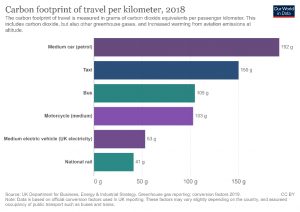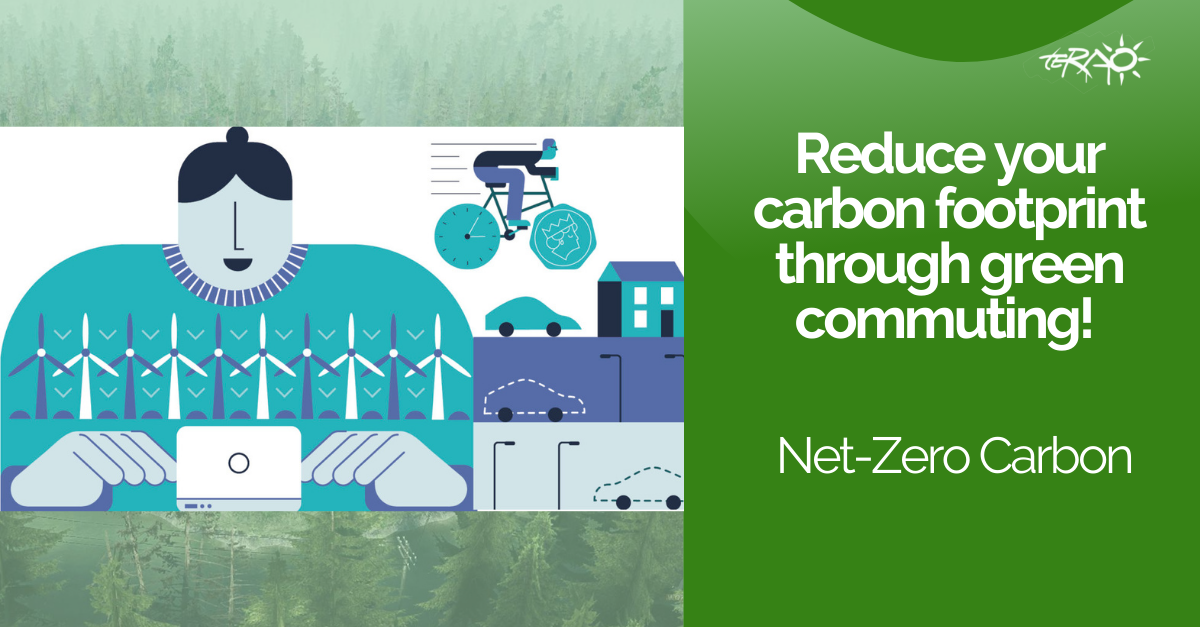To commute from home to work, do you know which transportation means will emit the least or the most carbon emissions?
One would think that carbon footprint reduction is normally a big concept and normally of a national scale, but there is still low hanging fruit that individuals can do for the climate. Increasing findings show that transportation shares the top carbon emissions in a city, and therefore how to travel between home and work seems to be one of the biggest everyday climate decisions for its citizens.
Here, with the helping hands from TERAO, let’s find out together what is the greenest commuting mode enabling individuals to reduce their carbon emissions.
Option 1: eliminate commuting with home-office
The commuting carbon emissions of employees are part of Scope 3 in terms of Carbon Footprint assessment, according to GHG protocol. One way to drastically reduce the commuting-induced emissions is to suggest home-office days to employees: no transportation, no emissions, more time spent at home in a familiar environment, and employees can get more sleep and be healthier, and thus more efficient at work. It can be a win-win solution!
Option 2: Different transportation means carbon emissions: Electrical car VS bicycle?
According to a UK report (Figure shown below), the transport preference should be given to the train and EV cars for long distance travelling. Traveling by EV cars only emits 53 g CO2 eq per passenger per kilometer, which is half of the emissions produced by buses and motorcycles and reduces around 80% of the emissions compared to petrol cars.

Source: Our World in Data, by Hannah Pitchie, published on 13th Oct. 2020
However, when considering China’s electricity mix structure, the emissions of EV cars can be 3 times higher. According to the comparison research by TERAO (Figure shown below), the emission of EV cars in China is calculated to be 168 g CO2 eq per passenger per kilometer. Thanks to the government’s carbon neutrality policies, the electricity mix of China will tend to be lower in carbon content, and we can hope that EV vehicle carbon emissions become much lower than normal car commuting.
For short-distance (lower than 10 km) commuting, one would think that subway or bus is already a low-emissive way of transportation. They are indeed around 2 times less emissive than the individual car. Bear in mind that for public transportation such as subway or bus, the carbon emission calculation can be complex, as it is greatly affected by how busy the line is. Therefore the carbon emissions of subway transportation can be two times lower than individual car commuting while staying around 3 times higher than biking.

Data extracted from Ref 1-4
The figure above shows that actually e-biking and cycling clearly win the competition concerning carbon emissions per passenger per kilometer. Indeed, they are 6 times less emissive than private cars and almost twice less emissive than walking!
Surprisingly, walking shows slightly higher emissions than EV cars or cycling. The explanation here is that walking usually takes much more effort, and consequently, people would intake additional food to recover this energy consumption after walking. The additional food intake leads to extra carbon emissions as well, and thereby walking ends up with higher carbon emissions than commonly expected.

Source: Bikeradar website, by Seb Stott, published on 30th Oct. 2020
Now that you know which transportation ways are the best to reduce your carbon footprint, on your mark and on your bikes!
In a future article, we will explore how companies can promote the usage of sustainable transportation for their employees. Stay tuned!
Articles references:
- How our daily travel harms the planet
- Which form of transport has the smallest carbon footprint?
- How green is cycling? Riding, walking, ebikes and driving ranked
- The Role of Electric Vehicles in Decarbonizing China’s Transportation Sector
- Impacts of Urban Transportation Mode Split on CO2 Emissions in Jinan, China
- Greenhouse gas reporting: conversion factors 2020
- Fuelling walking and cycling: human powered locomotion is associated with non-negligible greenhouse gas emissions
- Electric Bikes in the People’s Republic of China
- Emission Factors for Greenhouse Gas Inventories
If you need more details, please do not hesitate to contact Gaspard Lemoine-Scelles, our Business Development Manager, at this address glemoinescelles@teraoasia.com. It would be a pleasure for us to contribute to the reduction of your asset carbon footprint and make this world a greener one.
Written by GAO Ya



![[Case Study]Boosting Productivity and Safety Through Optimized Factory Comfort](https://teraoasia.com/wp-content/uploads/2025/09/Cover-photo-150x150.png)
Leave A Comment